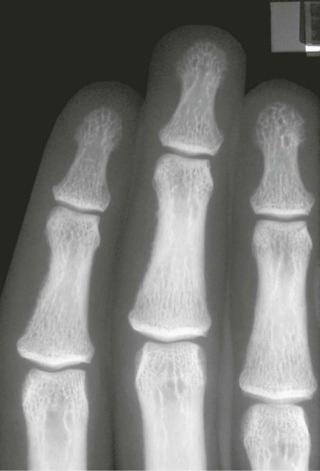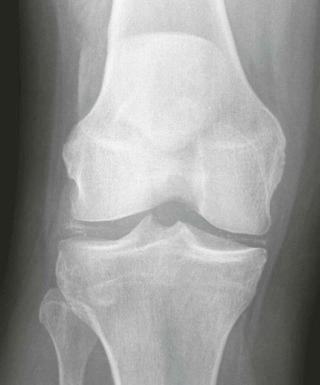Physical Address
304 North Cardinal St.
Dorchester Center, MA 02124
A review of more than 20,000 cases of primary hyperparathyroidism found that, in 89% of patients, the cause was a solitary adenoma in the parathyroid gland and that 10% had multiglandular hyperplasia. Parathyroid carcinoma and cysts causing primary hyperparathyroidism are very unusual, occurring in less than 1% of cases.
In the United States, primary hyperparathyroidism is said to affect 10 to 30 people per 100,000 population. The prevalence is higher in Italy and Sweden, where up to 2% of women older than 55 years will be affected by the disease. Women are affected three times more frequently than men. The disease appears ancient, in view of a recent report describing pathognomonic lesions of primary hyperparathyroidism in a skeleton from 7000 years ago.
The clinical syndrome can be remembered as “stones, bones, abdominal groans, and psychic overtones.” Some medical abnormalities that may be encountered are renal stones, osteoporosis, and pancreatitis.
Parathyroid hormone (PTH) acts on kidney and bone. It decreases tubular absorption of phosphorus, resulting in increased urinary phosphorus excretion and reduced serum phosphorus levels. A second action on the kidney is increasing the active form of vitamin D (25-dihydroxyvitamin D), which increases calcium and phosphorus absorption from the gastrointestinal tract.
PTH stimulates bone resorption, with a resultant increase of calcium and phosphorus in the blood. Consequently, there is an increase in serum concentrations of calcium.
The classic and earliest radiographic sign of primary hyperparathyroidism is subperiosteal phalangeal resorption along the radial aspects of the index, long, and ring fingers ( eFig. 78-1 ). This finding is now hardly encountered in the Western Hemisphere because of the widespread availability and use of routine serum chemistry panels. The well-described classic changes of primary hyperparathyroidism in textbooks of radiology are today in adults, largely of historical interest. Because routine serum chemistry panels are not performed in children, advanced radiographic changes of hyperparathyroidism due to primary hyperparathyroidism may still be encountered.

The imaging that tends to be performed for patients with biochemical evidence of primary hyperparathyroidism is outside the realm of musculoskeletal radiology. Because the cause is usually an adenoma and, less frequently, multiglandular parathyroid hyperplasia, technetium-99m sestamibi imaging and ultrasonography may be performed. These imaging studies are usually reserved for failed parathyroidectomy or in planning minimally invasive parathyroid surgery.
The majority of patients with primary hyperparathyroidism are asymptomatic, because the disease is detected biochemically. About 5% of women with renal stones have primary hyperparathyroidism.
As previously mentioned, the classic signs of primary hyperparathyroidism are now rarely encountered. These patients, however, are osteoporotic. Bone densitometry is considered an important tool for detecting and monitoring osteoporosis due to hyperparathyroidism to identify those patients at future fracture risk. Bone loss in hyperparathyroidism involves the outer compact bone, whereas, in postmenopausal osteoporosis, the loss of bone is cancellous/trabecular. Therefore, dual-energy X-ray absorptiometry (DEXA) may be normal in the spine in patients with mild primary hyperparathyroidism because it is rich in cancellous bone. The bone density of the femoral neck will be intermediate in degree of abnormality because bone at this location is composed of both cancellous and cortical bone. The most reliable site for measuring bone loss in primary hyperparathyroidism is the distal part of the forearm, which contains proportionately a large amount of cortical bone.
Chondrocalcinosis, typically in the knees and, less commonly, in the triangular ligament of the ulna in patients younger than 50 years, should raise the possibility of a hypercalcemic state. The most common hypercalcemic state is primary hyperparathyroidism, and it should be considered in the absence of joint space narrowing or other signs of degenerative arthritis. It would also be reasonable to raise this consideration in older patients if there are no accompanying signs of degenerative joint disease in the presence of chondrocalcinosis. Although it has been mentioned that primary hyperparathyroidism is now usually diagnosed biochemically, radiologists need to be aware that routine biochemical laboratory evaluations are not always done in the outpatient setting, which makes the observation of chondrocalcinosis and its possible relationship to hypercalcemia important ( eFig. 78-2 ).

There are numerous other causes for hypercalcemia besides primary hyperparathyroidism. A partial list includes familial hypocalciuric hypercalcemia; idiopathic hypercalcemia; familial hyperparathyroidism; multiple endocrine neoplasia, type 1; neoplasia from breast, lung, colon, prostate, and kidney; and multiple myeloma. Sarcoidosis and histoplasmosis may also present as hypercalcemia.
The critical breakthrough permitting primary hyperparathyroidism to be distinguished from tumor-induced hypercalcemia was estimating serum PTH levels. The diagnosis of primary hyperparathyroidism requires both elevated serum calcium and PTH levels.
A normal diet is prescribed with normal intake of calcium but without calcium supplementation. Thirty to 50 mg per day of cinacalcet, which is a calcium emetic, reduces serum concentrations of PTH and calcium.
Become a Clinical Tree membership for Full access and enjoy Unlimited articles
If you are a member. Log in here